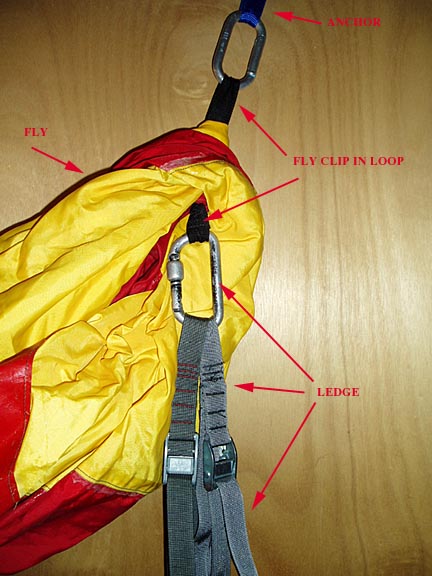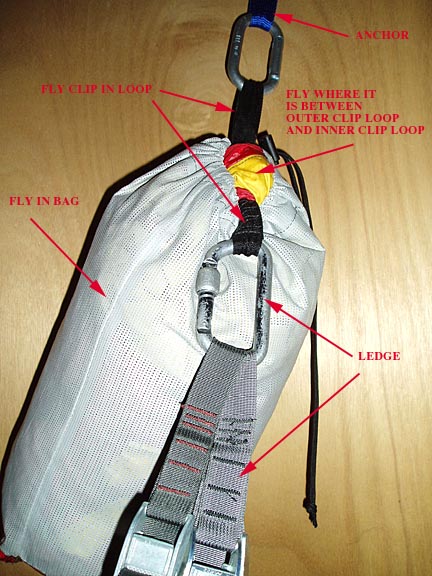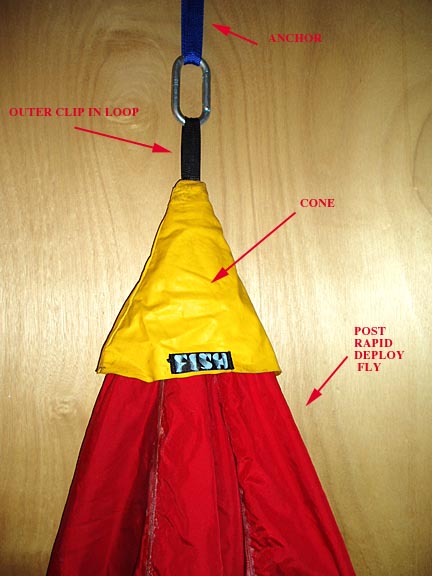Portaledge FAQ
"Why should I buy one of your ledges instead of the other guys?"
Our ledges are a better value and work better than some of the other ledges ledges on the market. This is not us talking, but customers who have used the other ledges and spent their hard earned cash. Another reason is putting your money behind a real US climbing company with real people who appreciate your business and depend on your continued business in order to eat dinner tomorrow. Our ledges are made in the USA, and we source all our materials in the USA whenever possible. You will never hear us bragging about how we got cheap Chinese aluminum for our ledge frames on social media... a sad but true tale of a current ledge maker.
"How much does your ledge weigh"
The single ledges weigh about 8.4lbs and 12.5lbs with the fly. Our Doubles weigh about 9.3lbs and 14.5 with the fly.
"Why did you use 4130 tubing instead of aluminum?"
We chose this material because of the superior toughness versus aluminum. It is because of this toughness and strength that we are able to use a smaller diameter tubing than the manufacturers that use aluminum. This makes our ledges a bit smaller as far as the overall package goes, without skimping on the actual bivy size of the ledges. The 4130 tubing we use also wears longer than aluminum and gives a more consistant longevity over the life of the ledge. Another plus is the way the 4130 tubing reacts with the aluminum corners. Since they are different metals, there is less interlocking between the metals, thus the corners are much less likely to bond together with the tubes and make the ledge hard to get apart. Because of this, we can machine our tolerances very close and give you a prescision product that really works.
"Is your fly waterproof and does it completely cover the ledge?"
Yes, our fly material is waterproof, but that does not mean you will dry and here's why: Condensation. Our fly does for the most part completely cover the ledge, that is when you pull the fly snug around the ledge, there will be about a 1 foot wide swath under the ledge that is not enclosed. We think this is a better system than the fully enclosed ledge as you have more options for vapor management. If you are in a steady rain with no wind you can leave the bottom edge of the fly open to let air circulate. You cannot do this with a zippered door fly. Open the zipper and the rain will just pour in on you. It is like sleeping in a zip lock baggie. Not nice. You can also retrieve items from the haul bags while the fly is on your ledge and protecting you from rain. Simply reach out of the bottom edge of the fly and into your haul bags. With a zipper door fly, you must hang out in the elements to retreive any gear, and get wet in the process.
Here is another fly tip. Store your fly unstuffed when you are not on the wall. The urethane coating of many fabrics does not like to be all kinked up and squashed for long periods of time. The external coating on your fly is what is they call DWR, or Durable Water Repellent. This external treatment can wear out over time, and your fly will start to be less waterproof. Luckily, you can restore this DWR easily and inexpensively with a product by NikWax called "WaterShed". We recommend that you use this treatment before problems arise, and before you venture out on any wall where weather may be a factor. The internal coating can be repaired in any area that is getting wear with a product called PolyCoat, from the makers of AquaSeal. This is a brush on coating that will waterproof any repairs or worn areas inside your fly.
Always remember this mantra: A rainfly will not keep you dry. It only keeps the rain from directly beating on your head.
"What is your hauling bag made from?"
All our ledge bags are made from our burly 28oz haul bag fabric. This makes hauling your ledge safe and convenient. Hauling the ledge under your haul bag just makes sense, and is a much better method than trying to cram the other guys ledge into an always full haul bag.
"How big is your double ledge, in real world terms?"
Near perfect for a two small guys or one real guy and an average girl. If you have two big guys, it will be a bit tight. Best bet would be to take two ledges, but don't get us wrong. Our Double Whammy ledge is not tiny. It is 42" x 76" O.D.
"Is there a rainfly available for the one night stand?"
Not at this time, but you never know. Maybe sometime.
"Do you sell your rainflys separately?"
Yes, but they are made for our ledges only. They will not work as envisioned on other models of ledges.
"How does the internal pole on your ledges work?"
Easy. It simply pushes out the rainfly to create a more roomy internal space. It also keeps the outer surface of the ledge smooth and tight, reducing wind noise and allowing water to spill off the outer surface easily.
"How fast will your ledge set up?"
With minimal practice you can set up one of our ledges in about one minute in your living room. Plan on two minutes while on a wall. If it is dark and raining, adjust accordingly.
"If I had a FISH Single Ledge, could I get two people in it if I had to?"
Yes. Our ledges are plenty strong for this emergency. Our single ledge is the largest single ledge on the market, so even though it will be a bit tight, you will be better off in ours than in theirs.
"How long will my FISH ledge last? How many walls?"
Good question. If you do minimal maintenance, and don't rip, burn, abrade, or damage the bed too bad, expect 10 - 15 walls. If you really watch out where you set the ledge up and don't belay on it every day you could get much more. Pete Zabrock (aka Pass The Pitons Pete, infamous internet wall doctor) has something like 370 nights in his FISH Double Whammy ledge. In that time the bed was replaced and the suspension replaced. The strucural elements do not really wear out. If you do wear them out, we can upgrade your components for a very minimal cost.
"If my FISH ledge breaks, can you repair it?"
Yes, but this is very rare. We might get one ledge returned to us a year for repairs. These repairs are usually because the ledge got dropped a few thousand feet or the bed material got damaged from some sharp object. As far as the ledge "breaking" it just doesn't happen.
"Why should I buy a FISH ledge, rather than a Black Diamond or Metolius ledge?
In my opinion our design is more stable, simpler, stronger, and WAY cheaper. In a side by side comparison, our ledges were easier to set up, had less widgets and gimmicks, had more and smarter features that you actually need and were lighter weight than either the BD or Metolius products. This test was not done by us, but by an impartial reviewer for an online climbing site Where is the review you might ask??? Good question. Word is BD squashed it due to the unflattering review of their product.
"How do I set up the fly to "Rapid Deploy" in case of a storm?"
I posted this to a Supertopo.com thread:
Anyway: Ricardo et al, here are some pics and instruction on the no bag, super simple, rapid deploy fly.
Pic 1: The key here is to just get the main body of the fly between the outer clip in loop and inner clip in loop. You use a keeper biner on here (rather than your regular ledge clip in biner) that you take off when you clip the ledge in for real.

Pic 2: This is the fly stuffed into the regular bag. Note the clip loop has both ends accessible. Where the ledge is clipped in would have a keeper biner clipped in there when the ledge is not ready for use. The stuffed fly will just hang out like a tumor, ready to deploy. Tip: to save wear and tear on the fly clip in loop, clip your ledge into the keeper biner (not pictured) if you think rain is pretty unlikely. If it does rain, just unclip the keeper biner and you are ready to deploy. You will only need to unweight the ledge for a second to do this.

Pic 3: This is the fly after you pull the bag off. Simple rapid deployment. To get it ready for next time, just bring the ledge clip in inside the cone back up to the outer clip in, attach a keeper biner from inner to outer, and stuff the fly back into the bag.

Easier than it looks and sounds. Try it, you'll like it. And for everyone who has ever bought a FISH ledge, we are offering a free upgrade to this 20 year old system.



